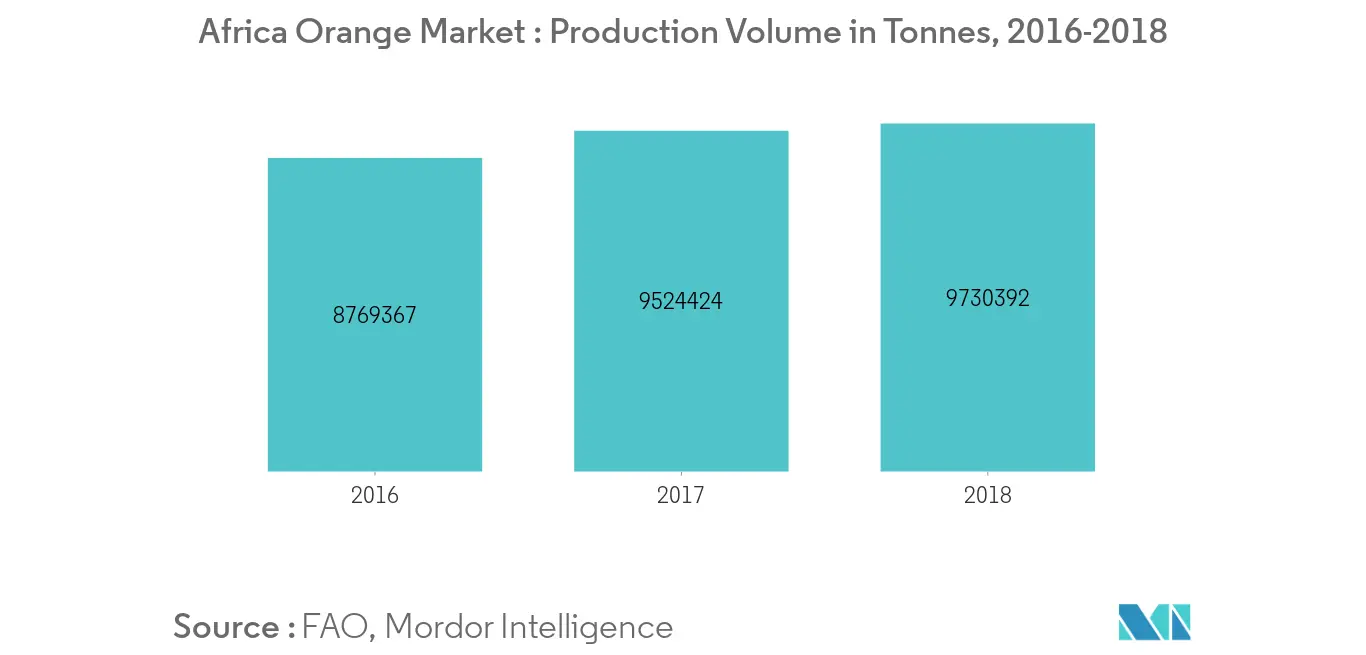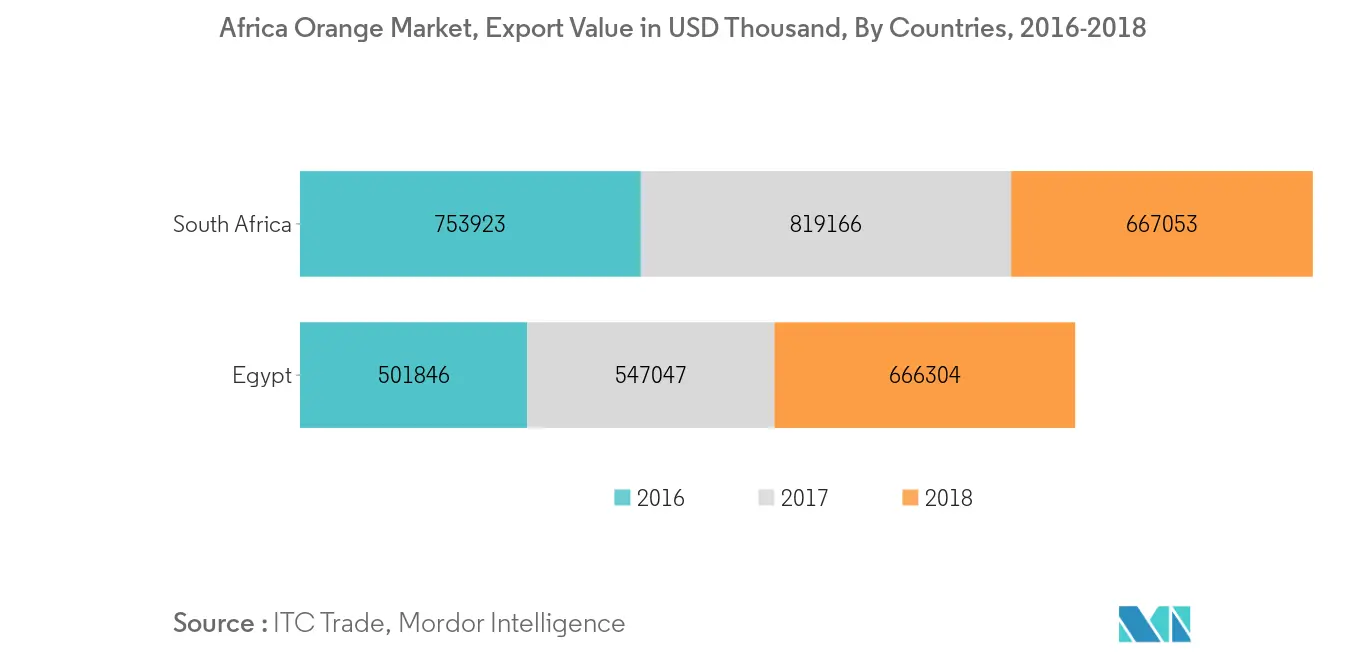Market Trends of Africa Orange Industry
This section covers the major market trends shaping the Africa Orange Market according to our research experts:
Production Analysis of Orange
According to United States Department of Agriculture, South Africa's production is estimated to rise 4 % to 1.6 million tons due to a return to normal weather conditions and an increase in area in the forecasted period. Morocco's and Egypt's production is estimated to decline by 31% and 17% to 815,000 tons and 3.0 million tons respectively due to water shortages and unfavorable weather. In Egypt, strong winds and high temperatures affected the flowering and fruit set. Overall, the production in 2018, increased by 2% to 1.43 Million MT. This is due to normal rainfall, no hail damage, and an increase in area planted in the main growing regions of Limpopo, Eastern Cape, and Mpumalanga, which accounts for about 82% of the total orange production.

Export Analysis of Orange
According to the United States Department of Agriculture (USDA), Egypt is the largest exporter of oranges in the world, followed by South Africa. The export volume of oranges increased by 1% in 2019 as compared to 1.18 Million MT in 2018, based on the production and on South Africa`s efforts in addressing uncertainty in the European Union market due to the ongoing Citrus Black Spot (CBS) challenges. South Africa's export volume was at 1.3 million tons in 2018 and accounted for one-quarter of global trade. The European Union remains the top market for Africa followed by Russia, Saudi Arabia, and China. The increase in export observed in Egypt and Morocco has been due to the high yield in domestic production. However, South Africa, which is the second major market of orange in the region, has shown a slight decrease in production and import.


